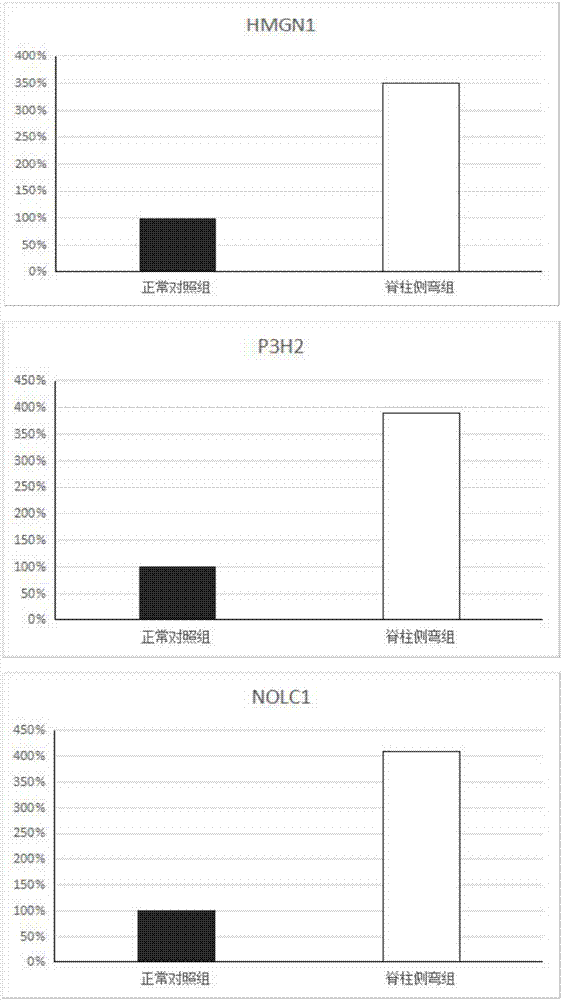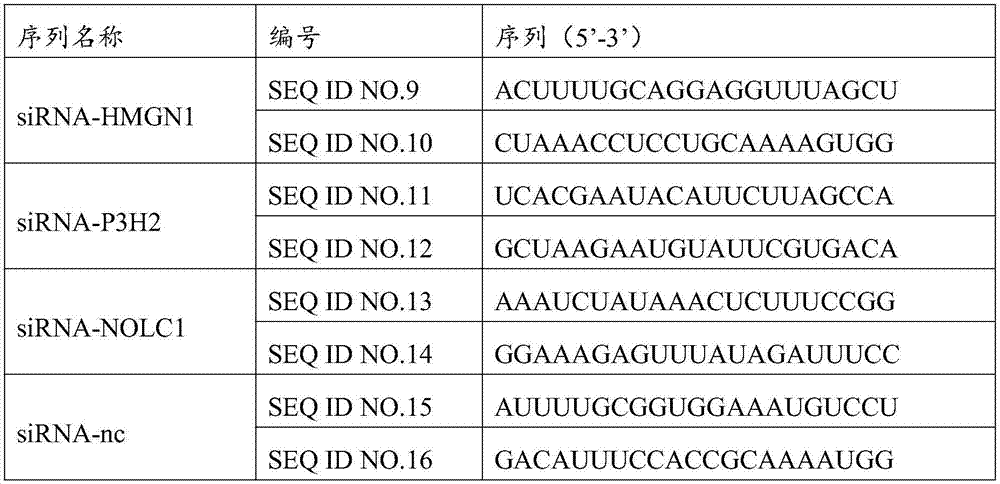Auxiliary detection kit for scoliosis in early stage and application thereof
A scoliosis and auxiliary detection technology, applied in the direction of DNA / RNA fragments, recombinant DNA technology, bone diseases, etc., to achieve rapid and effective early diagnosis and reduce the damage of X-ray radiation
- Summary
- Abstract
- Description
- Claims
- Application Information
AI Technical Summary
Problems solved by technology
Method used
Image
Examples
Embodiment 1
[0054] Example 1 Screening of differentially expressed genes by high-throughput sequencing
[0055] 1. Sampling
[0056] A total of 20 patients with scoliosis who were treated in the Department of Orthopedics of Peking Union Medical College Hospital from October 2012 to December 2015 were selected. A total of 20 cases were collected in the case group. All patients had typical clinical manifestations and were confirmed by X-ray examination. Controls were collected from patients with other diseases who were hospitalized in the Orthopedics Department during the same period, and a total of 15 cases were collected. The patients were adolescents between the ages of 10 and 18. Blood samples from all subjects were collected and stored in a -80°C low-temperature refrigerator after being numbered. All clinical samples in this study were informed to the patients and approved by the ethics committee of the hospital.
[0057] 2. Total RNA extraction from blood samples
[0058] use LS...
Embodiment 2
[0069] Example 2 qRT-PCR to verify the expression of HMGN1, P3H2 and NOLC1 genes in scoliosis patients
[0070] 1. Materials
[0071] Fifteen patients with scoliosis who were treated in the Department of Orthopedics of Peking Union Medical College Hospital from October 2012 to December 2015 were selected. All patients had typical clinical manifestations and were diagnosed by X-ray examination. Controls were collected from patients with other diseases who were hospitalized in the orthopaedic department during the same period, and a total of 8 cases were collected. The patients were adolescents between the ages of 10 and 18. Blood samples from all subjects were collected and stored in a -80°C low-temperature refrigerator after being numbered. All clinical samples in this study were informed to the patients and approved by the ethics committee of the hospital.
[0072] 2. Method
[0073] 2.1 Extract the total RNA from the blood samples, the same as the extraction method in Ex...
Embodiment 3
[0084] Example 3 RNAi interferes with the above-mentioned gene expression in chondrocytes of patients with scoliosis
[0085] 1. Cell Culture
[0086] (1) Wash the obtained iliac cartilage from patients with scoliosis three times with D-HANKS (Huamaike, product number HMK03230) solution under sterile conditions.
[0087] (2) Cut the iliac cartilage with scissors (about 1mm 3 size) in a sterile centrifuge tube.
[0088] (3) Digest with 0.25% trypsin at 37°C for 20 min, shaking every 5 min.
[0089] (4) Centrifuge at 800 rpm for 5 min, and discard the supernatant.
[0090] (5) 0.2% type II collagenase was digested at 37°C for 4 hours, and filtered through a 200-mesh sieve.
[0091] (6) The filtrate was centrifuged at 800 rpm for 5 min, and the supernatant was discarded.
[0092] (7) Rinse with DMEM medium, centrifuge at 800 rpm for 5 min, and repeat 3 times.
[0093] (8) After the cells were counted, inoculated into culture flasks, and DMEM medium containing 10% volume of ...
PUM
 Login to View More
Login to View More Abstract
Description
Claims
Application Information
 Login to View More
Login to View More - R&D
- Intellectual Property
- Life Sciences
- Materials
- Tech Scout
- Unparalleled Data Quality
- Higher Quality Content
- 60% Fewer Hallucinations
Browse by: Latest US Patents, China's latest patents, Technical Efficacy Thesaurus, Application Domain, Technology Topic, Popular Technical Reports.
© 2025 PatSnap. All rights reserved.Legal|Privacy policy|Modern Slavery Act Transparency Statement|Sitemap|About US| Contact US: help@patsnap.com



